Introduction
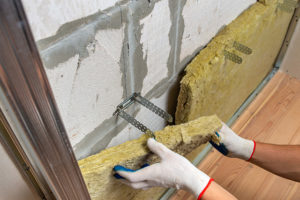
With many measures available to help make your home more efficient, it can be tough to know where to start. Government-backed guidelines recommend improving the structure (also known as the fabric) of your home before moving onto larger heating and renewable energy measures.
Making structural improvements to the fabric of your home as the first priority will create a more comfortable environment, reducing the impact of rising energy costs. This type of work is commonly referred to as retrofitting.
What is retrofitting?
‘Fabric first’ retrofitting
It’s always better to install fabric measures and reduce the energy demand of your building before proceeding with any tech-based installation such as heat pumps.
Whole house approach
An approach like this needs to look beyond just energy bills – factoring in comfort, maintenance and appearance. It also ensures you get the maximum value for whatever changes you’re planning.
Each house is unique and will vary with both what can be improved, and how it can be done. We recommend a professional retrofit plan to help show the best options and solutions, and the order to do them in.
A retrofit coordinator can do this by visiting your home and creating a report on how best to approach retrofitting your home. The retrofit coordinator will create this based on your individual property, how you live in it and what is appropriate for your home in line with PAS 2035.
PAS 2035 is a standard set by the UK Government that contractors must follow when completing retrofit works as part of any grant-funded programme. It ensures work is carried out to the correct standard and doesn’t cause any harm to your home.
Although not required if you do get any work done yourself that is not grant funded, we recommend that you follow the PAS 2035 standard.
For more information on retrofitting guidelines and finding a contractor, visit the Trustmark website.
If you wish to carry out changes in line with the whole house approach, you can express your interest below. We’ll then get in touch based on your eligibility for any local schemes.
Listed buildings and conservation areas
There are many listed buildings and localised conservation areas in Somerset that may place restrictions on work that can be completed. These restrictions do not necessarily prevent retrofitting measures, but they do need to take the individual characteristics of the building into account. This is especially the case when dealing with solid walls, avoiding concerns with breathability and damp – which could significantly affect the historic fabric of the building as well as those living there.
The Council has produced a Planning Guide to Installing Renewable Energy on Domestic Premises, providing advice to property owners considering making improvements. Historic England also provides detailed guidance and information on Retrofit and Energy Efficiency in Historic Buildings .
For more information can be found on our Conservation Areas pages.
Insulation
Insulation will prevent the loss of heat throughout your home, lowering your energy costs and improving your comfort. Here are five different options for insulating your home:
1. Cavity wall insulation
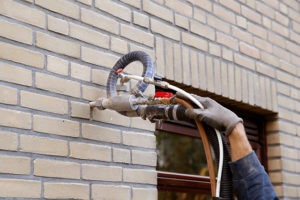
A cavity wall is formed from two walls with a space between them, with this type of insulation filling the gap between them. This method could save a semi-detached home as much as £285 per year in energy bills. A survey, carried out by a retrofit coordinator or qualified contractor, will help identify if your home is suitable for cavity wall insulation.
2. External wall insulation

External wall insulation is suitable for homes that do not have cavity walls and require insulation to be fixed to the outside of the building. With this type of insulation, you are able to keep it in the style of your home, following the existing fittings on the outside of the property such as drainage and windows/doors. This method can save up to £390 per year for a semi-detached home.
3. Internal wall insulation
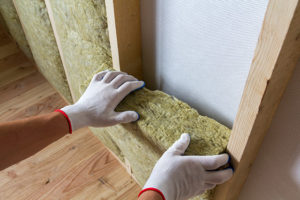 For homes that do not have cavity walls and where there are restrictions on external wall insulation, internal wall insulation is available.
For homes that do not have cavity walls and where there are restrictions on external wall insulation, internal wall insulation is available.
This method can have a positive impact on energy bills, however will make your rooms smaller as the insulation materials are added to the inside walls of your home.
4. Loft insulation
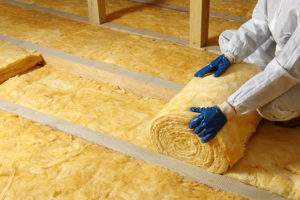 This is one of the most cost-effective methods to save energy in your home.
This is one of the most cost-effective methods to save energy in your home.
Adding loft insulation with a depth of just 270mm can save a semi-detached home up to £255 a year.
5. Underfloor insulation
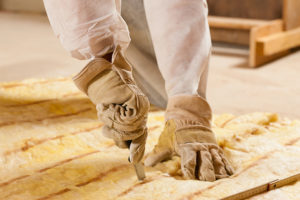 If your home has wooden floorboards on the ground floor, it may be possible to insulate the empty space below while still making sure the property is well ventilated. This will help improve draughts and offers a potential saving of up to £75 a year. Take care not to block up any vents as they help your wooden floor breathe.
If your home has wooden floorboards on the ground floor, it may be possible to insulate the empty space below while still making sure the property is well ventilated. This will help improve draughts and offers a potential saving of up to £75 a year. Take care not to block up any vents as they help your wooden floor breathe.
Alternatives to oil and gas heating
There are different ways of heating and powering your home that are more energy efficient and cost-effective than traditional oil and gas methods.
Below are five alternatives to oil and gas heating and the financial assistance that may be available to you when considering them.
1. Air source heat pumps
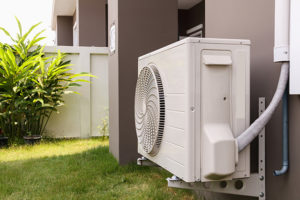
Air source heat pumps capture heat from the air to keep your home warm, using electricity rather than gas or oil – making them cheaper to run.
Before installing an air source heat pump, it’s important to make sure your home is adequately insulated in line with the fabric first approach (see above). If you’re currently heating your home using gas, electricity or oil, you’ll notice large annual savings on your energy bills, potentially reaching up to £2,200 per year.
It’s important to note that air source heat pumps may not be suitable for all homes. High heat retention radiators, solar panels and battery installation can be good alternatives where air source heat pumps are not compatible.
2. Ground source heat pumps
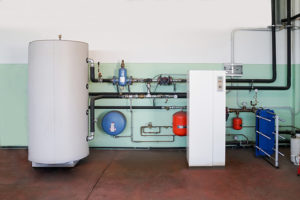
These work in a similar way to air source heat pumps, but instead require loops of buried pipework or a deep borehole, transferring heat from the ground to your home. Ground temperatures offer more stability, so these heat pumps offer an efficient heating system year-round.
Installation costs are generally more expensive than air source heat pumps and your home will require the outside space to install the pipework. Similar to air source heat pumps, cost savings are significant – especially when moving away from oil and electric heating, with potential savings of up to £2,000 a year.
3. Solar panels
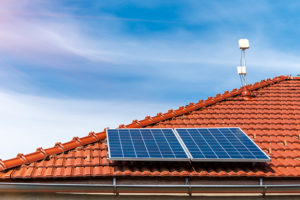 Solar panels produce free electricity from the sun’s rays. To install solar panels, your home will need to have a suitable roof, be unshaded and face the right way to catch the sun.
Solar panels produce free electricity from the sun’s rays. To install solar panels, your home will need to have a suitable roof, be unshaded and face the right way to catch the sun.
Savings can reach up to £400 a year with solar panels installed.
4. Solar thermal panels
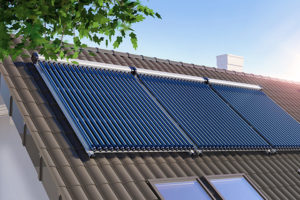 Solar thermal panels use the sun’s energy to provide heating to your hot water supply. These panels work best in homes with a high water usage and can work alongside a conventional boiler with a hot water storage cylinder.
Solar thermal panels use the sun’s energy to provide heating to your hot water supply. These panels work best in homes with a high water usage and can work alongside a conventional boiler with a hot water storage cylinder.
The average saving for solar thermal panels is around £50 per year.
5. High heat electric storage heating
 Storage heaters keep hold of warmth from cheaper night time electricity and release it during the day. Storage heating technology has come a long way, with heaters made after 2018 required to meet strict energy efficiency standards. Replacing old storage heaters with modern ones that have better controls will hold warmth for much longer and heat your home at a faster rate.
Storage heaters keep hold of warmth from cheaper night time electricity and release it during the day. Storage heating technology has come a long way, with heaters made after 2018 required to meet strict energy efficiency standards. Replacing old storage heaters with modern ones that have better controls will hold warmth for much longer and heat your home at a faster rate.
